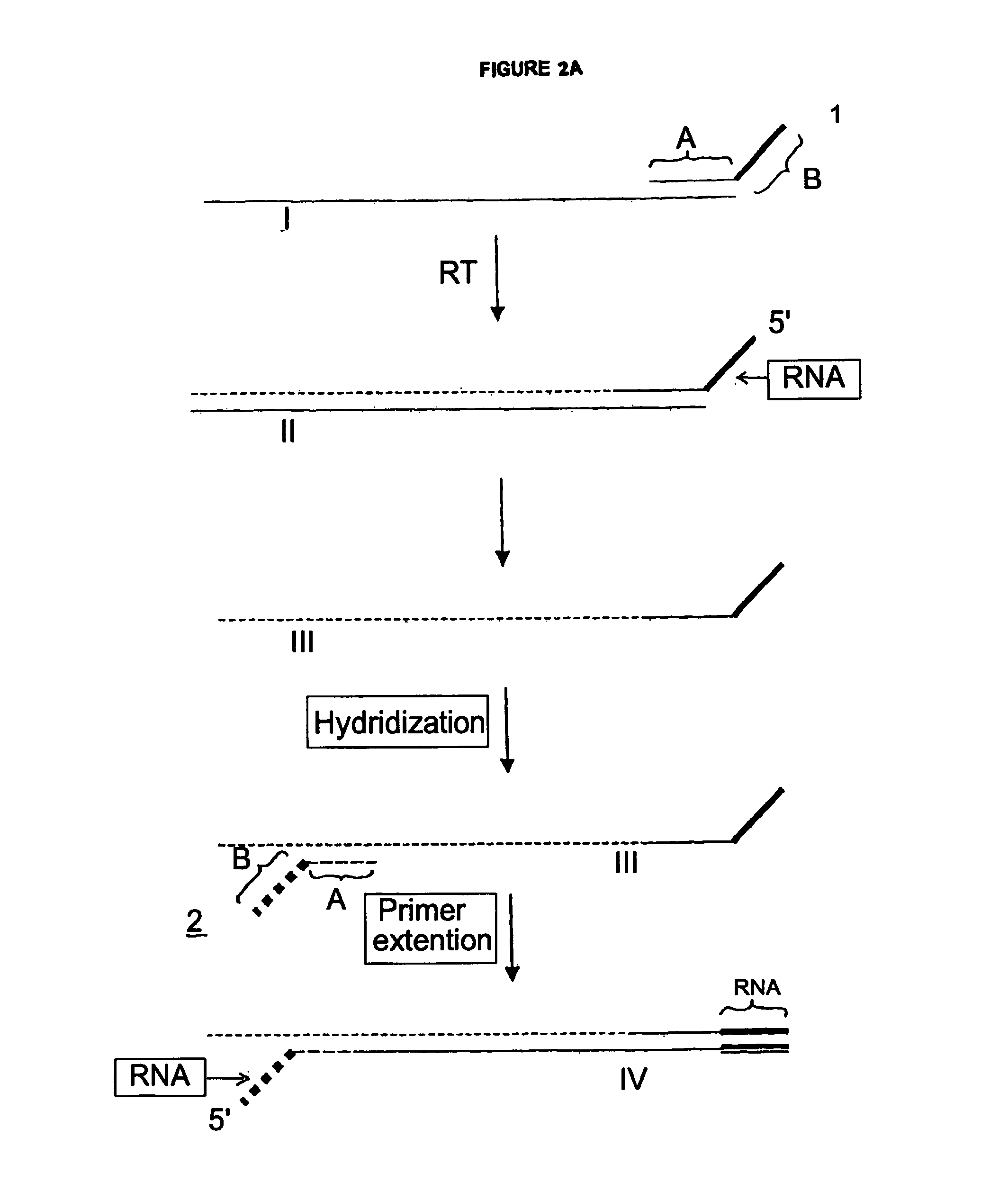Methods for generating double stranded DNA comprising a 3' single stranded portion and uses of these complexes for recombination
- Summary
- Abstract
- Description
- Claims
- Application Information
AI Technical Summary
Benefits of technology
Problems solved by technology
Method used
Image
Examples
example 1
Creating a Double Stranded cDNA with a 3′ Overhang of a Unique Sequence Appended to the Second Strand cDNA from Poly-A mRNA Using a Single Composite Primer
[0227]Poly-A mRNA from MOLT-4 cell line (CLONTECH 6587-1) was used. The process was in two steps: 1) synthesis of first cDNA strand; 2) synthesis of second cDNA strand and cleavage to produce a double stranded cDNA (with a 3′ overhang or single stranded portion) from the total mRNA of the sample. The double stranded cDNA product comprises at one end an RNA / DNA heteroduplex, which is a substrate for RNase H. The sequence of the two strands of this heteroduplex portion is not related to the target, and is incorporated through utilization of a composite (first) primer.
Primer sequences:
[0228]
MTA1: GACGGAUGCGGUCTTTTTTT(SEQ ID NO:1)MTA2: GACGGAUGCGGUCUTTTTTTTN(SEQ ID NO:2)MTA3: GACGGAUGCGGUCUTTTTTTTNN(SEQ ID NO:3)
wherein italicized nucleotides denote ribonucleotides and “N” denotes a degenerate nucleotide (i.e., it can be A, T, C or G)....
example 2
Characterization of Products of Step 2 Reaction of Example 1
[0244]In the reaction of Example 1, a “unique” sequence (i.e., a sequence not hybridizable to the RNA template) is expected to be created at the 3′-end of the second strand cDNA due to the “unique” sequence of the 5′ RNA portion of the composite primer used. This sequence (of the 3′-end of the second strand cDNA) is complementary to the 5′-RNA portion of the composite primer and is not related to sequences in the target RNA. To determine the presence of this sequence in the second strand cDNA that is obtained, PCR amplification of the reaction products (as found in reaction mix of step 2 of Example 1) was performed using a primer which is complementary to the expected sequence at the 3′-end of the second strand cDNA, as a forward primer, and a G3PDH-specific primer as a reverse PCR primer. This primer pair would be expected to amplify a specific product from a double stranded cDNA that has the “unique” sequence.
[0245]PCR re...
PUM
| Property | Measurement | Unit |
|---|---|---|
| Displacement | aaaaa | aaaaa |
Abstract
Description
Claims
Application Information
 Login to View More
Login to View More - R&D
- Intellectual Property
- Life Sciences
- Materials
- Tech Scout
- Unparalleled Data Quality
- Higher Quality Content
- 60% Fewer Hallucinations
Browse by: Latest US Patents, China's latest patents, Technical Efficacy Thesaurus, Application Domain, Technology Topic, Popular Technical Reports.
© 2025 PatSnap. All rights reserved.Legal|Privacy policy|Modern Slavery Act Transparency Statement|Sitemap|About US| Contact US: help@patsnap.com



